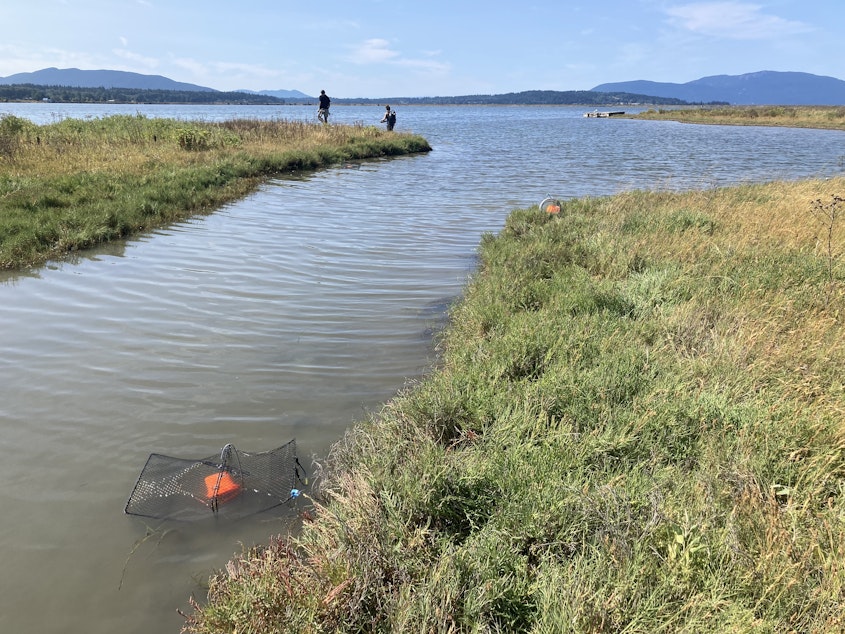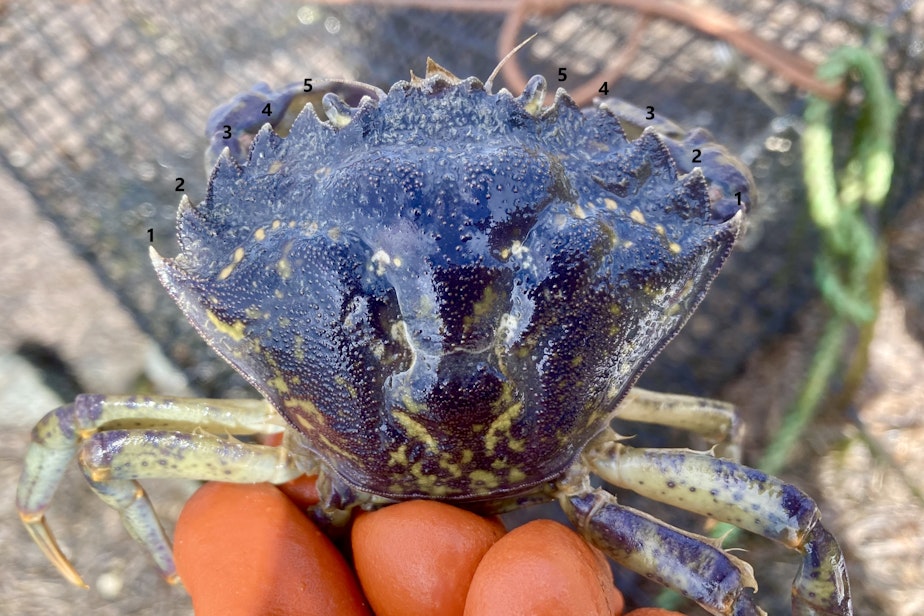Think 85,000 invasive crabs is a lot? Wait 'til you see Vancouver Island
While 85,000 invasive green crabs—a record number—were captured near Bellingham last year, even more of the voracious crustaceans have turned up just across Washington’s watery border with Canada.
Since mid-November, trappers have scooped up more than 107,000 European green crabs in Clayoquot Sound, the traditional territories of the Tla-o-qui-aht and Ahousaht First Nations, on the west coast of Vancouver Island.
“It's incredible how much green crab are being pulled up, way too many for our liking,” said Councilmember Terry Dorward of the Tla-o-qui-aht First Nation in Tofino, British Columbia.
“There's hundreds of thousands of these green crabs. It should be a national outcry here, up in Canada,” Dorward said.
Like their Native American counterparts south of the border, First Nations officials on Vancouver Island say the crab infestation threatens their way of life.
“As Tla-o-qui-aht, we rely heavily on the ocean,” Dorward said. “That's who we are. We've always relied on our fisheries for our sustenance and our well-being."
Sponsored
"A threat to our way of life is a call to action,” he said.
Another 41,000 European crabs have been trapped in the Sooke Basin, near the southern tip of Vancouver Island and about 15 miles as the crab floats from Port Angeles on the Olympic Peninsula.
Since arriving in San Francisco Bay around 1989, possibly in the ballast water of a cargo ship or in a shipment of live seafood, the European crabs have spread up and down the West Coast.
As adults, they tend not to scuttle too far from home, but their tiny larvae get swirled around, sometimes great distances, by ocean currents. The crabs spend about two months as larvae, living wherever the tides carry them.
Sponsored
Efforts to control crabs on one side of a watery border can be quickly undone by inaction on the other side.
“That's why it's so important that Canada and the U.S. work together on this problem, because the crabs certainly don't recognize that border between the two countries,” said Tom Therriault, a Nanaimo-based biologist with Fisheries and Oceans Canada.
Researchers can only guess at the true scale of the crab invasion, since trapping hauls in an unknown fraction of the population, and the amount of effort put into trapping varies from place to place.
“The more gear you put down, the more crabs you're likely to catch,” Therriault said.
Teams in Clayoquot Sound have hauled in 10,000 crabs in a single day — as many as trappers on the Washington side of the border would catch in a week or more despite setting out many more traps.
Sponsored
“That’s the level of [European green crab] population that we’re trying to avoid in our state,” said Allan Pleus, a biologist with Washington Department of Fish and Wildlife, by email. “Thankfully we are still in the earlier stages of invasion.”
In 2021, tribal and state workers removed 85,000 green crabs from the Lummi Sea Pond, a 750-acre enclosure on Lummi Bay west of Bellingham, 30 times more than the year before. The Lummi Nation declared the crab infestation a disaster in November and urged Washington Gov. Jay Inslee to do the same.
In January, Inslee ordered the Washington Department of Fish and Wildlife to take emergency measures “to effect the eradication of or to prevent the permanent establishment and expansion of European green crab.”
“His emergency order notwithstanding, green crabs have been established in Washington for over 20 years and it is impossible to eradicate them,” marine biologist Andrew Cohen of California said by email.
Cohen, who calls his consulting business the Center for Research on Aquatic Bioinvasions (CRAB), was the first person to identify a European green crab in Washington state, back in 1998.
Sponsored
He says though many have tried, no one has ever eradicated a green crab population.
“It's not at all clear how effective trapping is, even though many trapping efforts and trapping studies claim success,” Cohen said.
A single green crab can lay up to 200,000 eggs a year, so missing even a few crabs could let a population rebound. So could crab larvae floating in from afar.
“It would be vastly more effective, and cheaper, to regulate ballast discharges effectively to prevent or reduce new invasions, rather than letting them invade and then trying to control or eradicate them,” Cohen said.
In June, to prevent the spread of various invasive species, the Canadian government required all vessels entering Canadian waters to treat their ballast water before discharging it. Activists have spent 20 years petitioning and suing the U.S. Environmental Protection Agency to do something similar, without success.
Sponsored
Government biologists agree that eradication of the European green crab from the West Coast is not in the cards. But they say it’s not too late to control this invasion in the Salish Sea of Washington and British Columbia and spare critical locations like eelgrass meadows and shellfish beds from the claws of the unwanted invertebrates.
“Since we are still dealing with a relatively early stage of incursion of green crab into the Salish Sea, at least outside of Sooke, right, we're not calling it 'established' yet there. The invasion could still fail,” Therriault said.
Lummi biologists hope to expand their trapping efforts on the Lummi Sea Pond up to fivefold this spring. The artificial lagoon is ringed by a 3-mile dike with tide gates that can control the flow of sea water, and crab larvae, in and out of the pond.

In December, Lummi officials said the tribe has not ruled out any options for controlling the crabs, including poisoning the pond with rotenone, an herbicide used in efforts to combat harmful invasive species.
“We definitely need to do everything that we can to eradicate them from this area,” Victor Johnson with the Lummi Natural Resources Department said.
“There are clearly people who champion crab trapping. I understand the impulse,” Cohen said. “I swat mosquitos, and take some satisfaction in it, but I don't think my swatting is controlling the mosquito population.”
Researchers also found record numbers of European green crabs in Grays Harbor, Willapa Bay, and Oregon’s Coos Bay in 2021.
“The Coos Bay waterfront appears to be a hotspot for green crabs,” a November report from the South Slough National Estuarine Research Reserve found.
Researchers trapped 1,400 of the voracious European crabs there, nearly three times more than all native crab species combined.
“We expect to see decreasing populations of native clams including littleneck, gaper, razor, butter, and cockles,” they concluded.
The researchers encouraged visitors and residents of Coos Bay to catch and eat the invasive crabs. They released a cookbook featuring recipes including green crab pozole, ceviche, and risotto.





